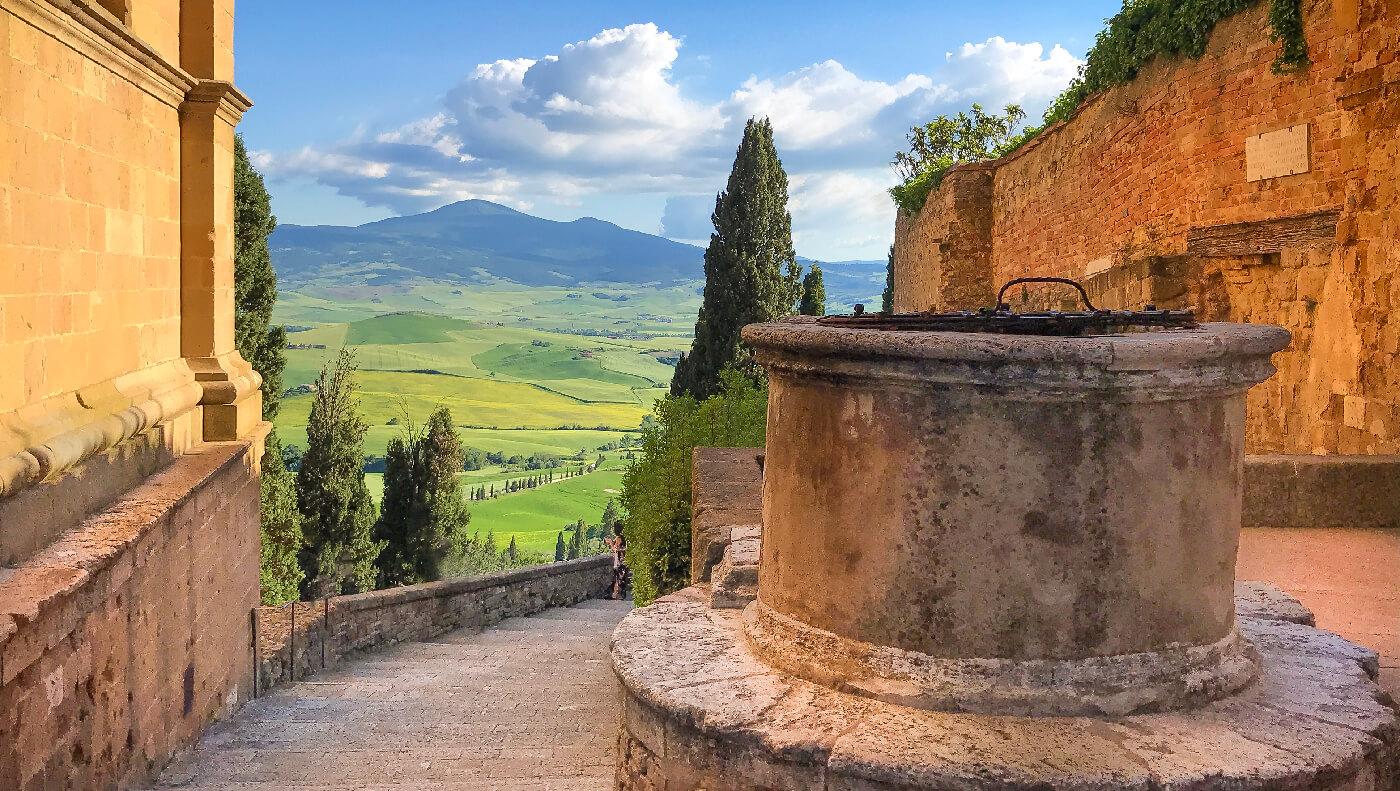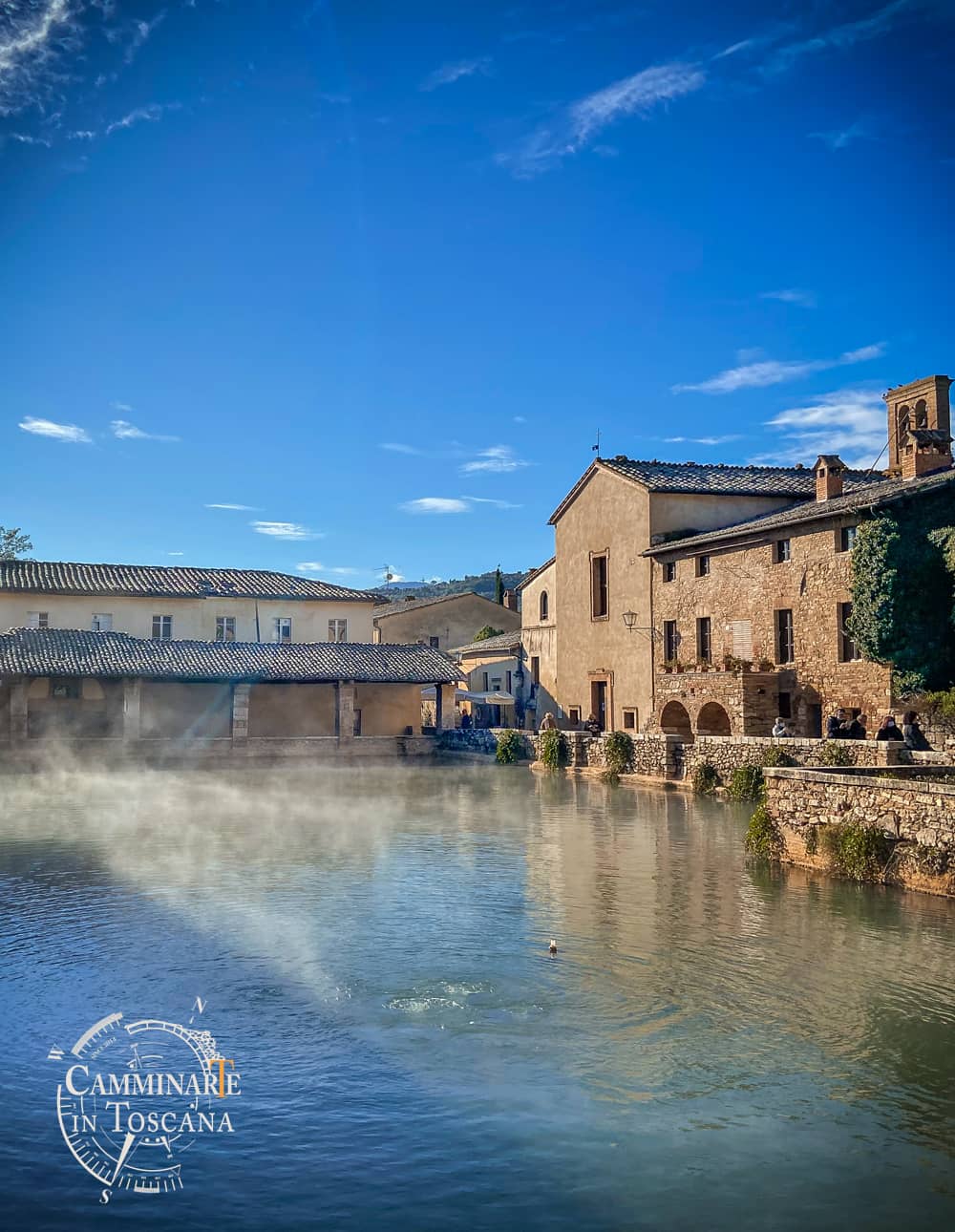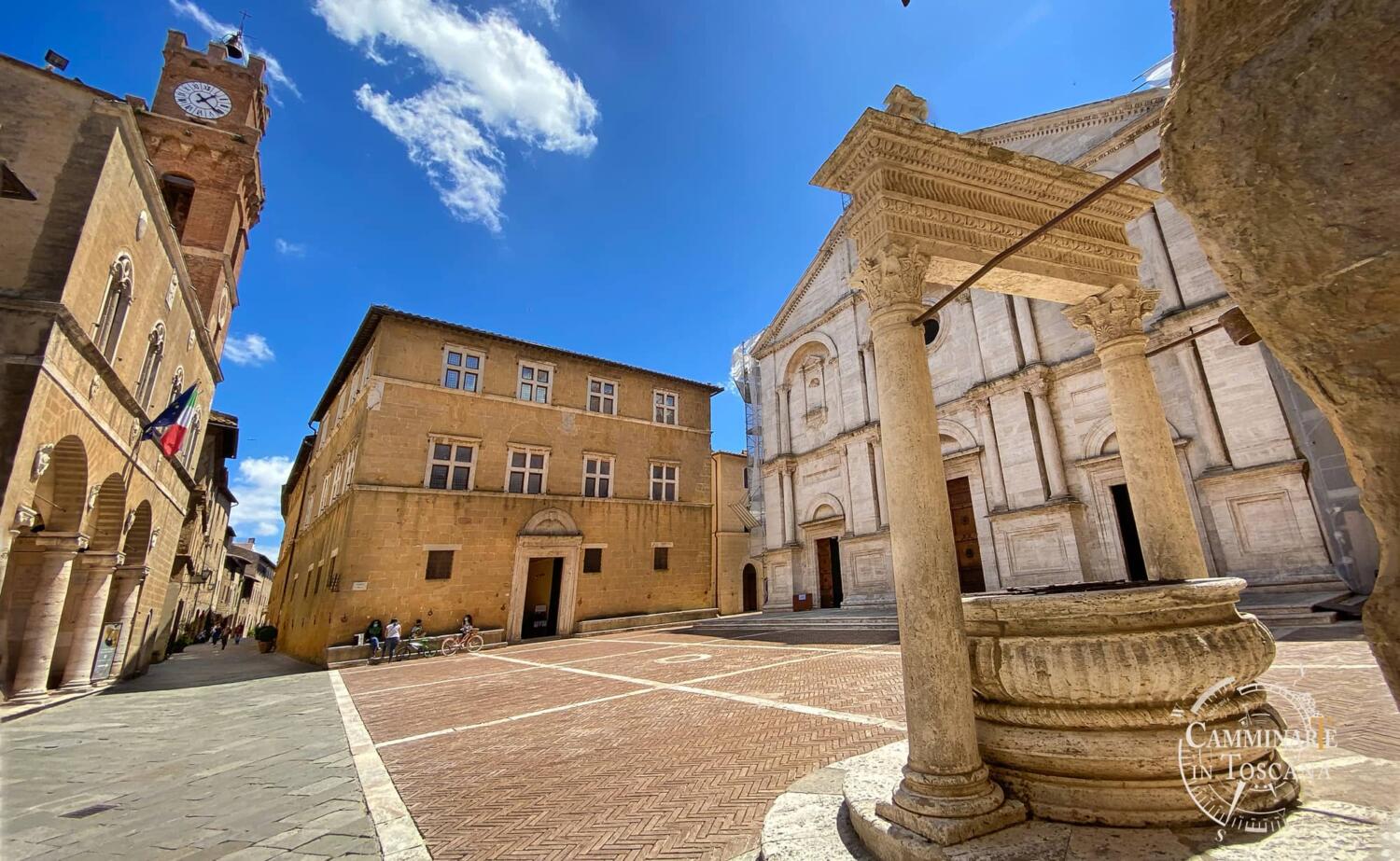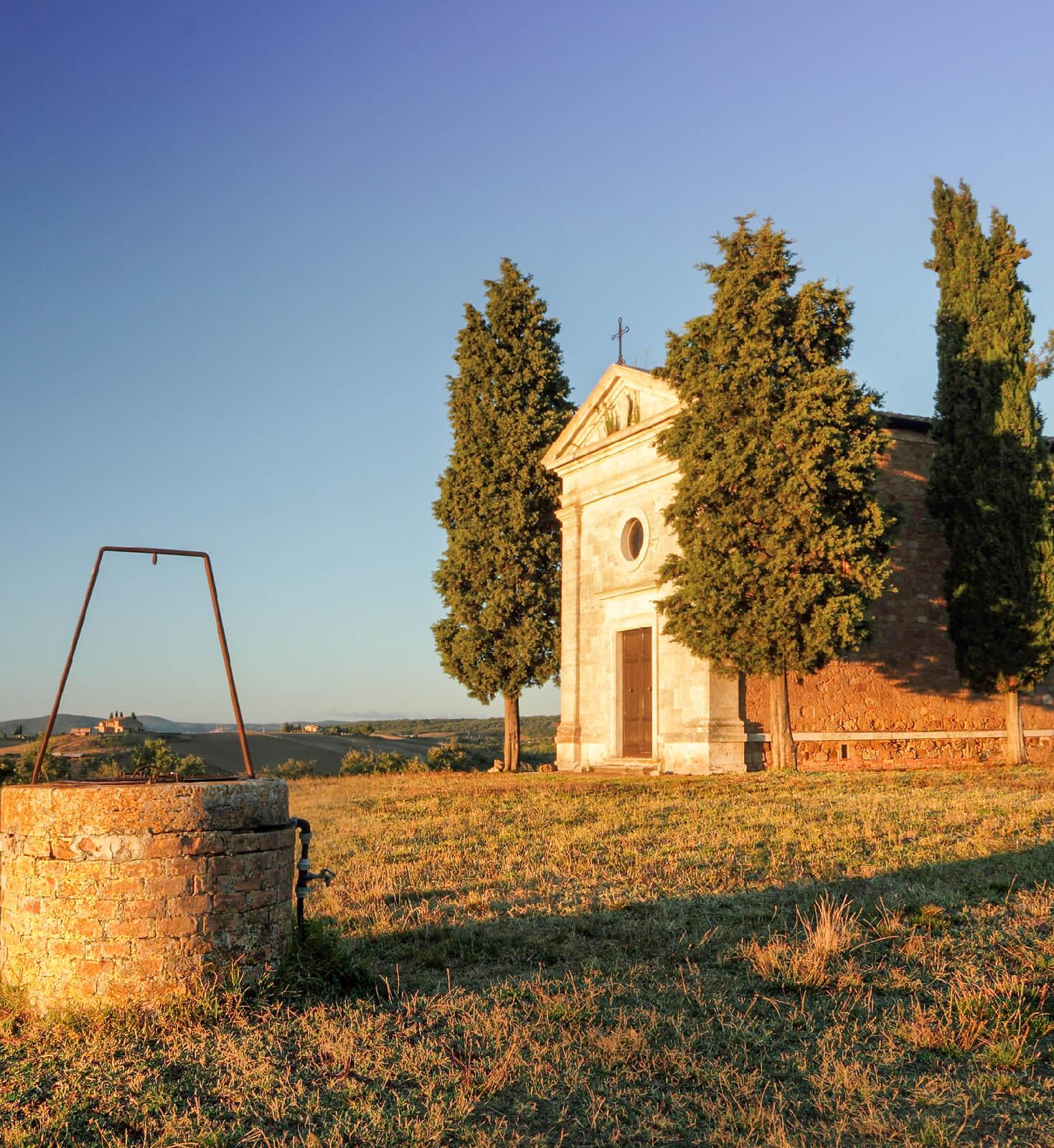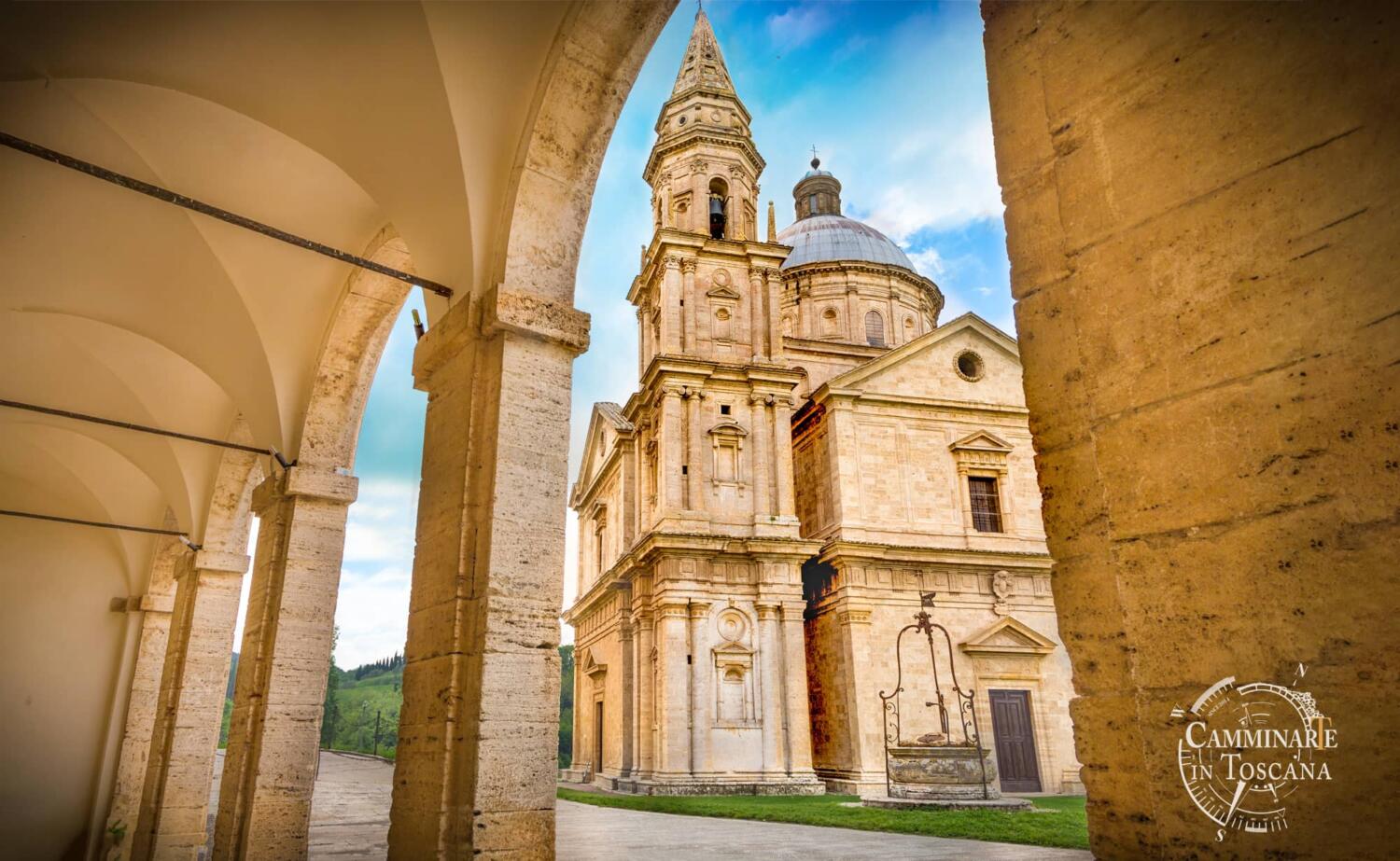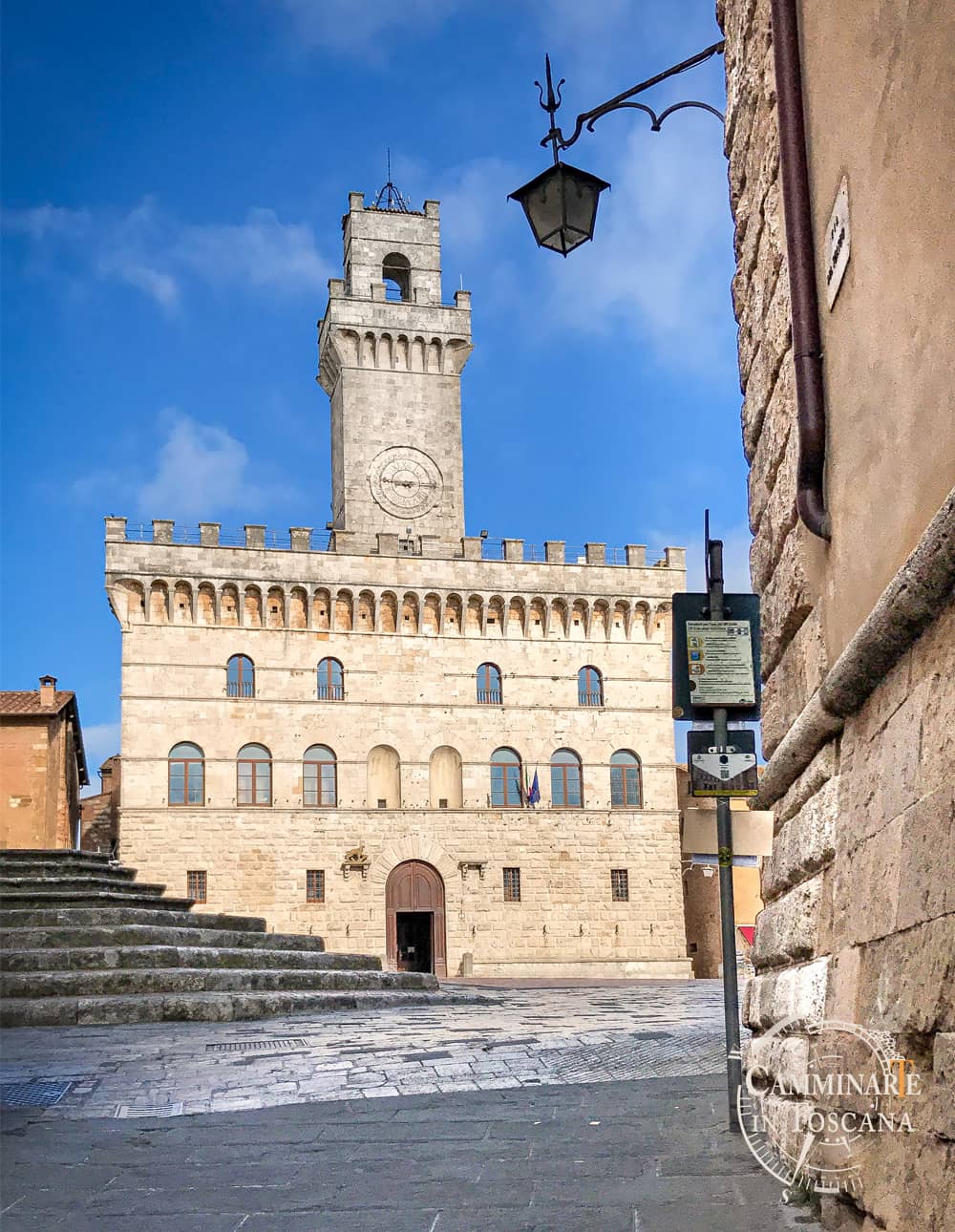A guided tour in Val d’Orcia, a poetic corner of Tuscany
A guided tour in Val d’Orcia and in Montepulciano allows you to discover what it means immersing yourself in the beauty of the Tuscan countryside, the one praised by visitors from all over the world. On this full-day itinerary, you will contemplate the charm of this area – a UNESCO heritage site – visiting its most renowned villages which, for their history and exceptional state of repair, are authentic jewels to be discovered.
The tour of the Val d’Orcia will start from Bagno Vignoni, a spa town known since Roman times and frequented by great personalities, such as Santa Caterina da Siena and Lorenzo the Magnificent. Here we will see the famous medieval basin of the village from which, still today, sulphurous water naturally rises; the picturesque appearance of the thermal bath will allow you to contemplate a truly enchanting image, which inspires a sense of tranquility and harmony. We will then move to San Quirico, a village of Etruscan origin that in the Middle Ages was one of the important halting places on the Via Francigena. Inside the hamlet we visit the places related to the history of this ancient pilgrims’ route, such as the courtyard of the old Scala Hospital and the Pieve di Santa Maria Assunta, places frequented by travellers to find an accommodation facility and to pray. We will then immerse ourselves in the tranquillity of the Horti Leonini, one of the admirable examples of an Italian style garden dating back to the sixteenth century, the Horti were donated in the seventeenth-century by the Grand Duke of Tuscany Cosimo III to the important family of Chigi. Returning along the streets of the historic centre, we visit the Collegiate Church of Saints Quirico and Giuditta, an interesting example of Romanesque architecture in the area, especially for the iconographic richness of its portals.
Tour in Val d’Orcia: Pienza, the ideal city of the Renaissance
After visiting San Quirico, we move on with the guided tour in Val d’Orcia going towards Pienza; on the road that separates the two villages, you will be literally enchanted by the sight of the farms and cypresses dotting the hills’ top. We stop halfway to admire what is an icon of the Tuscany Region in the world: the Vitaleta Chapel. After having taken photos of this picturesque building, immersed in the countryside, I will tell you the singular story of the chapel and its connection with a prodigious statue of the Virgin once kept there. When we arrive in Pienza, at first you won’t think that a Renaissance architectural jewel can be preserved in this small village. Shortly after we have entered its alleys, we reach the majestic Piazza Pio II, the core of Pienza which, in the context of the buildings we will see, is an extraordinary example of town planning.
The Cathedral of Pienza, a special building…
Transformed by Pope Pius II‘s will – from which it took its current name – Pienza was a medieval village, originally called Corsignano, but in the mid-fifteenth century that village was rethought as an ‘ideal Renaissance city’, above all thanks to the new architectures standing in this day that have largely redesigned its look.
We visit the Cathedral, a building which, due to its particular shape, not only stands out from the other churches in the area, but also has a shape – the square one – which is the clear expression of classic models revival, following a typical trend within the erudite environments of the fifteenth century of which Pius II – belonging to the powerful Piccolomini family – was part. We will discover that the Cathedral of Pienza also has peculiarities in its interior, where we will be able to notice how the church aisles are incredibly flooded by a large amount of light, to the point that Pius II himself defined his Cathedral a “glass house“. Another particular thing of the interior are the altarpieces – all of the same size and shape – featuring saints whose cult was linked both to the personal events of the pope and to the ‘political manifesto’ of his pontificate that coincided with the period in which Europe and the whole of Christianity lived a crucial moment in their history. After admiring the particular atmosphere of this church – which, thanks to its shapes and symbols, makes you feel the sensation of being in a unique environment of this kind –, we go back outside, where we will discover the secrets concealed in the geometric design of the square floor that, as we will see, is linked to sunlight and the seasons. We then move on with our guided tour in Val d’Orcia and in Montepulciano reaching the panoramic point behind the Duomo, where you can finally contemplate a view of the landscape you had only been able to appreciate in documentaries and films so far. On the background of this pleasant landscape opening before you, after having seen the gentle slope of the hills, you can see the bulk of Monte Amiata.
Guided tour of Montepulciano
On the background of this pleasant landscape opening before you, after having seen the gentle slope of the hills, you can see the bulk of Monte Amiata. From the panoramic terrace it is also possible to notice a detail of the set for the well-known film Gladiator. For lunch we can stop at a farmhouse in the area, where you will taste the typical dishes of this magical land, prepared according to tradition. The last stop on the Val d’Orcia tour is Montepulciano, a town that is located outside the Val d’Orcia park, but it is an essential halt to complete the travel experience in this fascinating area. As the French poet Paul Bourget wrote:
«(Montepulciano is a village of a) fierce beauty, set in its bastions with a clear design like a relief of geometry».
Piazza Grande, the sixteenth-century jewel
Strategic bulwark for the control of commercial traffic, Montepulciano has been for centuries the bone of contention between the ancient republics of Siena and Florence; the succession of the different domains have had a reflection in the architecture of the town. We begin the tour of Montepulciano from Porta delle Farine, a medieval gateway whose particular name is linked to a particular reason that we will discover together. When we reach Piazza Grande you will be speechless before the beauty of this space, the core of the city which, thanks to its elegant Renaissance buildings, made Montepulciano famous with the nickname of the “pearl of the sixteenth-century“. Piazza Grande was also the setting for some important film productions; as we see the buildings in the square, I will show you where the scenes of The Medici and New Moon were filmed. We will then visit the Cathedral, a majestic church that preserves masterpieces of Tuscan art from the fourteenth to the seventeenth century, some coming from the pre-existing medieval church. After visiting the Cathedral, the surprises will not end: going down towards the lower part of the town, you will discover the amazing beauty of the historic centre and its breathtaking views – such as what you appreciate from the courtyard of Palazzo Ricci – or historically unique places, like Caffè Poliziano, one of the oldest cafes in Italy.
At the end of this guided tour in Val d’Orcia and in Montepulciano you will return home aware of bringing the images and the flavours of one of the most precious corners of Tuscany with you.

